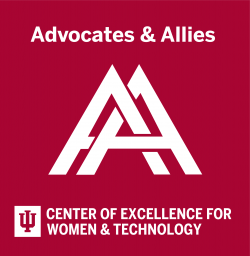Prejudice and structural barriers based on age, otherwise known as ageism, is a deepset facet of our society. While most frequently directed at older people, ageism can also affect young adults. We discuss the latent imagery and stereotypes we have around age, the presence of ageism in higher education, and methods to validate age diversity and promote the inclusion of a variety of ages.

Reflect: How do you view people of different ages?
Think of the average person over 50—what emotions or thoughts come to mind? Do you envision them as “stuck in the past,” incapable of helping themselves, or incompetent? Now reverse that person’s age to be a very young adult. Are they inexperienced, unwise, or entitled? Would you write them off as a “kid” if they express concern about something? These stereotypes are so entrenched in society that ageism persists as a major problem in many classroom and workplace environments (Gratton & Scott, 2016). Furthermore, most people consider ageism to only affect older adults when it really cuts both ways (Fernández et al., 2018). Young adults are more likely to report receiving discriminatory behavior based on age, and while awareness about ageism can help reduce discrimination against older people, these benefits are not felt by young adults (Bratt et al., 2020). Consider how these stereotypes prevent us from recognizing the value of others and create barriers to opportunities for success.
Learn: Ageism in Higher Education
Ageism affects students, staff, and faculty alike. While some universities have made moves to consider adult and “non-traditional” students in their policies, older learners’ needs and contexts are often unconsidered in institutional decisions about policy and programming (Simi & Matusitz, 2016). Younger students are both treated as and called “kids” by faculty and staff (Valles, 2014), revealing the patronizing images that these institutional members have of their student population. Because of stereotypes that older faculty are ineffective (Bunch & Palladi, 2017), universities have been accused of passing over older candidates who have impressive credentials and evaluations for younger, less experienced candidates (Manchir, 2014). When unexamined in professional development, ageism can have negative consequences that ripple beyond higher education. For example, students who do not receive adequate intervention around this kind of bias can bring ageism into careers like nursing (Gallo, 2019) and psychotherapy (López et al., 2020), leading to negative outcomes for elderly patients. Ageism also intersects with other systems of oppression (Marcus & Fritzsche, 2017), including sexism, racism, and ableism. Older women have difficulty being hired (DePillis, 2015) and are often pressured to retire earlier (Rikleen, 2016), whereas younger women are written off as inexperienced “girls” and their contributions ignored (Waldon, 2020). These realities are exacerbated in academia, where women fight against a combination of sexism and ageism to maintain legitimacy in their institutions and their fields (Johnson, 2021; Shaw, 2020).
Change:
- Promote intergenerational engagement: Creating positive connections across generations can foster a respect for both younger and older perspectives (Rowe et al., 2020), but these benefits only come when we foster interactions between people of all ages. (Erikson 2019) argued that promoting contemplative pedagogy – that is, practices that allow students to reflect on and then share their experiences – may promote the opportunity for people to engage in meaningful dialogue about the value of different age perspectives. Projects that involve service-learning and collaboration across generations can also highlight the unique skills and wisdom of people from different generations (Tam, 2013). Such projects can extend throughout the university – to undergird programming as well as office work – such that faculty, students, and staff all gain exposure and appreciation for people of all ages.
- Establishing Age-Friendly Principles: With higher education seeing an ever-growing diversity in age amongst learners, anyone teaching, programming, or providing services must consider changing contexts and needs. How are you considering the schedule of students who are more likely to be a caregiver and/or have a full-time job when scheduling office hours or planning events? Are people of differing ages represented in governance structures, research, curriculum, and beyond? These questions fall in line with recent efforts to create set of principles to establish Age-Friendly Universities where learners of all ages are considered.
Weekly Resource Recommendations
- Book: This Chair Rocks: A Manifesto Against Ageism – This manifesto deconstructs the way that ageism – against both young and old people – operates in our society.
- Video: The Harmful Effects of Ageism – HuffPost discusses ageism on a spectrum of structural exclusion to individual bias, bringing in personal stories of experiencing ageism.
- Article: Think You Know What ‘College-Aged’ Means? Think Again. – Recent demographic trends challenge our traditional idea of a college student and the programs we create to support them.
- Podcast:Aging Up, Not Out (Women at Work) – This podcast reviews this experiences of women in the workplace and how age creates a new dimension for understanding these experiences.
Get these tips delivered to your mailbox!
We send these tips every Tuesday during the fall & spring semesters to our mailing list. If you are not already on our mailing list you can request to be added by completing the form below.

